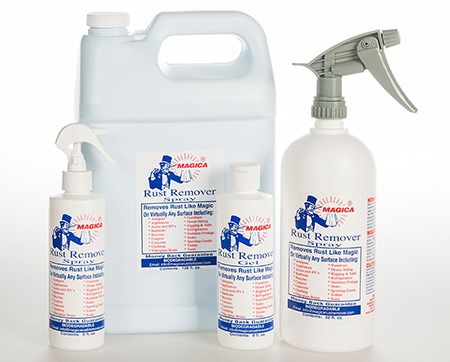The Dangers of Harmful Acids and Chemicals in Cleaning Products
Most commercial cleaning products should not result in any significant health impacts, so long as they’re used in accordance with the manufacturer’s labels. However, there are some products that could result in adverse health effects if used incorrectly or if mixed with other cleaning products.
Here are just a few examples of some common chemicals and household products that you should be careful of.
Bleach
Bleach is one of the most common household cleaning products that can be dangerous in some applications. Bleach’s main active ingredient is sodium hypochlorite, which can have a pH level of up to 11, making it harsh on skin. There are several other types of acids and chemicals present in bleach that also have high pH levels.
Symptoms you experience after exposure to bleach will depend on the volume, pH, concentration, viscosity and the duration of contact. Concentrated solutions could result in severe tissue damage, even without extensive exposure. Exposure to the skin or eyes will produce burning or irritation, and inhalation of fumes could result in respiratory problems.
Other acid containing products
There are many common household cleaners that prominently feature acids. Toilet bowl cleaners contain compounds such as sulfuric acids (80 percent corrosive), hydrochloric acid (10 to 25 percent), oxalic acid (two percent) and/or sodium bisulfate (70 to 100 percent). You should also be on the lookout for acidity in drain cleaners, metal cleaners, rust removal products (including Magica) and more, as they tend to be naturally corrosive.
Symptoms that follow after exposure to these products will depend on the concentration and duration of contact. Acids can directly damage the surface layers of your bodily tissues, resulting in mild symptoms such as reddening to more severe symptoms such as blister formation and destruction of layers of the skin. Exposure to the eyes could result in pain, burning, redness and damage to the corneas. Ingestion can cause severe problems to the esophagus and gastric system, as well as nausea, vomiting and abdominal pain.
Products containing ammonia
Certain ammonia-based cleaning products are used frequently in commercial settings. These are caustic products that contain anywhere from three to 10 percent ammonium hydroxide. Examples include some drain cleaners, automatic dishwashing detergents and oven cleaners. Their caustic nature makes them great for cleaning, but also potentially hazardous.
Effects that arise from exposure to caustic compounds will depend mostly on the amount of contact and the concentration of the compound. Alkaline agents will directly affect tissues, but unlike acid solutions, these alkaline solutions have a greater potential for severe damage because of their ability to solubilize skin fats and proteins.
Ingestion of these products will result in burning in the nose, chest, throat and mouth, and extreme exposure can cause major gastrointestinal issues.
It is important you know exactly what’s in your cleaning products when you use them and how you can protect yourself to avoid the negative effects of exposure to them. If possible, avoid products that have these harmful side effects entirely as you do your cleaning.
However, in some cases, you may need to use rust removal products like Magica to tackle stubborn projects. After all, Magica is extremely effective at what it’s designed to do! To learn more about how to safely use our rust removal products, reach out to Magica, Inc. today.


